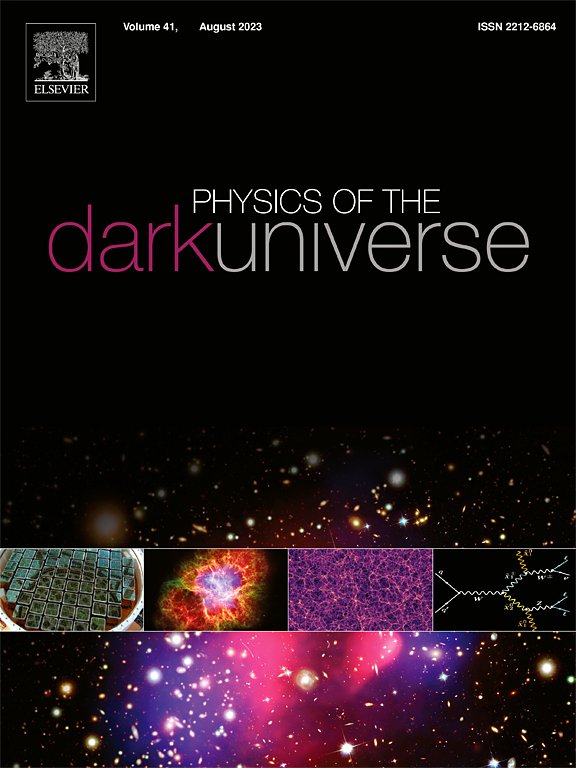Shadow and weak gravitational lensing of RN-like BH in plasma
IF 5
2区 物理与天体物理
Q1 ASTRONOMY & ASTROPHYSICS
引用次数: 0
Abstract
In this paper, we investigate weak gravitational lensing and shadow radius in the Kalb–Ramond (KR) gravity for an Reissner–Nordström-like (RN-like) black hole (BH). The examination is carried out in three distinct frameworks: uniform plasma, singular isothermal sphere(SIS), and non-singular isothermal sphere (NSIS). When a gravitating object is surrounded by plasma, the lensing angle is determined by the frequency of the electromagnetic wave, plasma dispersion, plasma inhomogeneity, and gravity. Even in uniform plasma, the gravitational photon deflection angle differs from that in a vacuum and depends on photon frequency due to the second effect. We consider both effects and calculate the lensing angle for a significantly non-uniform plasma in the existence of KR gravity. Utilizing observational data from the Event Horizon Telescope (EHT) project for Sgr A*, we have obtained that which range of RN-like black hole’s parameters and correspond observations as well as when the Lorentz-violating parameter rise, radius of black hole shadow decrease. To connect a relationship with observations data, we examine the magnification and positioning of images produced by lensing, as well as the weak deflection angle and magnification for sources located near various galaxies.
求助全文
约1分钟内获得全文
求助全文
来源期刊

Physics of the Dark Universe
ASTRONOMY & ASTROPHYSICS-
CiteScore
9.60
自引率
7.30%
发文量
118
审稿时长
61 days
期刊介绍:
Physics of the Dark Universe is an innovative online-only journal that offers rapid publication of peer-reviewed, original research articles considered of high scientific impact.
The journal is focused on the understanding of Dark Matter, Dark Energy, Early Universe, gravitational waves and neutrinos, covering all theoretical, experimental and phenomenological aspects.
 求助内容:
求助内容: 应助结果提醒方式:
应助结果提醒方式:


